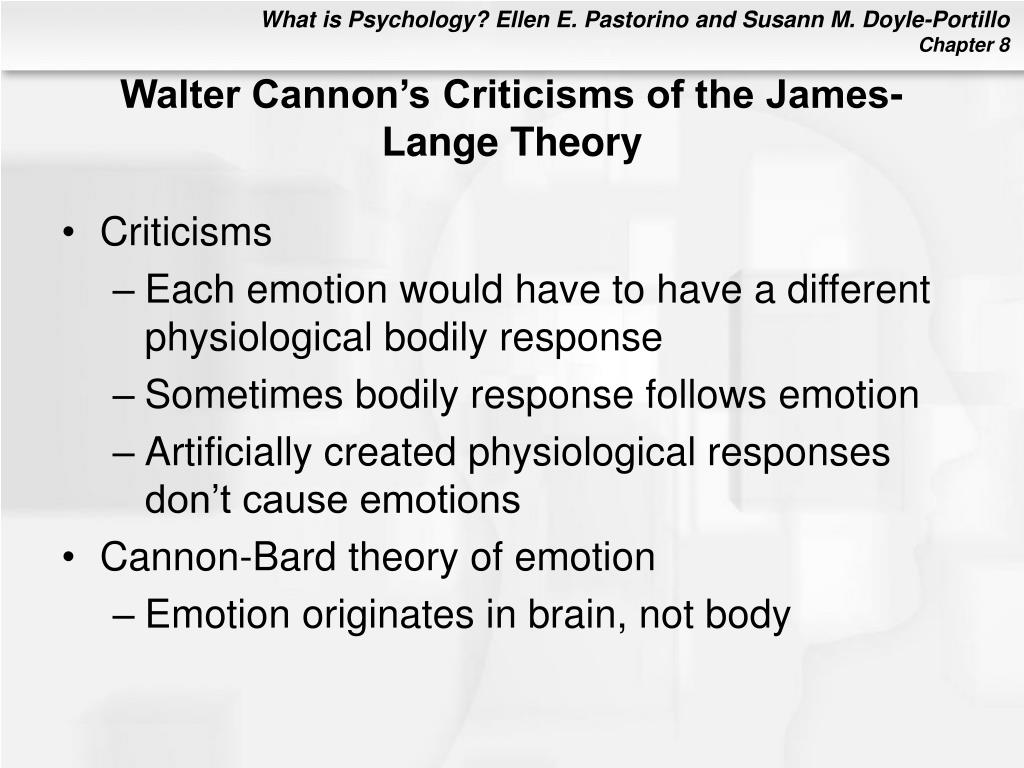

The notion of causality is a difficult one.

We might then see the bear, and judge it best to run, receive the insult and deem it right to strike, but we should not actually feel afraid or angry. Without the bodily states following on the perception, the latter would be purely cognitive in form, pale, colorless, destitute of emotional warmth. and that the more rational statement is that we feel sorry because we cry, angry because we strike, afraid because we tremble. The hypothesis here to be defended says that this order of sequence is incorrect. Common sense says, we lose our fortune, are sorry and weep we meet a bear, are frightened and run we are insulted by a rival, are angry and strike. is that the bodily changes follow directly the perception of the exciting fact, and that our feeling of the same changes as they occur is the emotion. A person rationalizes that because they are crying, they must be sad.) Lange specifically stated that vasomotor changes are emotions.

James and Lange arrived at the theory independently. Emotions, then, are feelings which come about as a result of these physiological changes, rather than being their cause. The theory states that within human beings, as a response to experiences in the world, the autonomic nervous system creates physiological events such as muscular tension, a rise in heart rate, perspiration, and dryness of the mouth. The James-Lange theory refers to a hypothesis on the origin and nature of emotions developed independently by two 19th-century scholars, William James and Carl Lange.


 0 kommentar(er)
0 kommentar(er)
